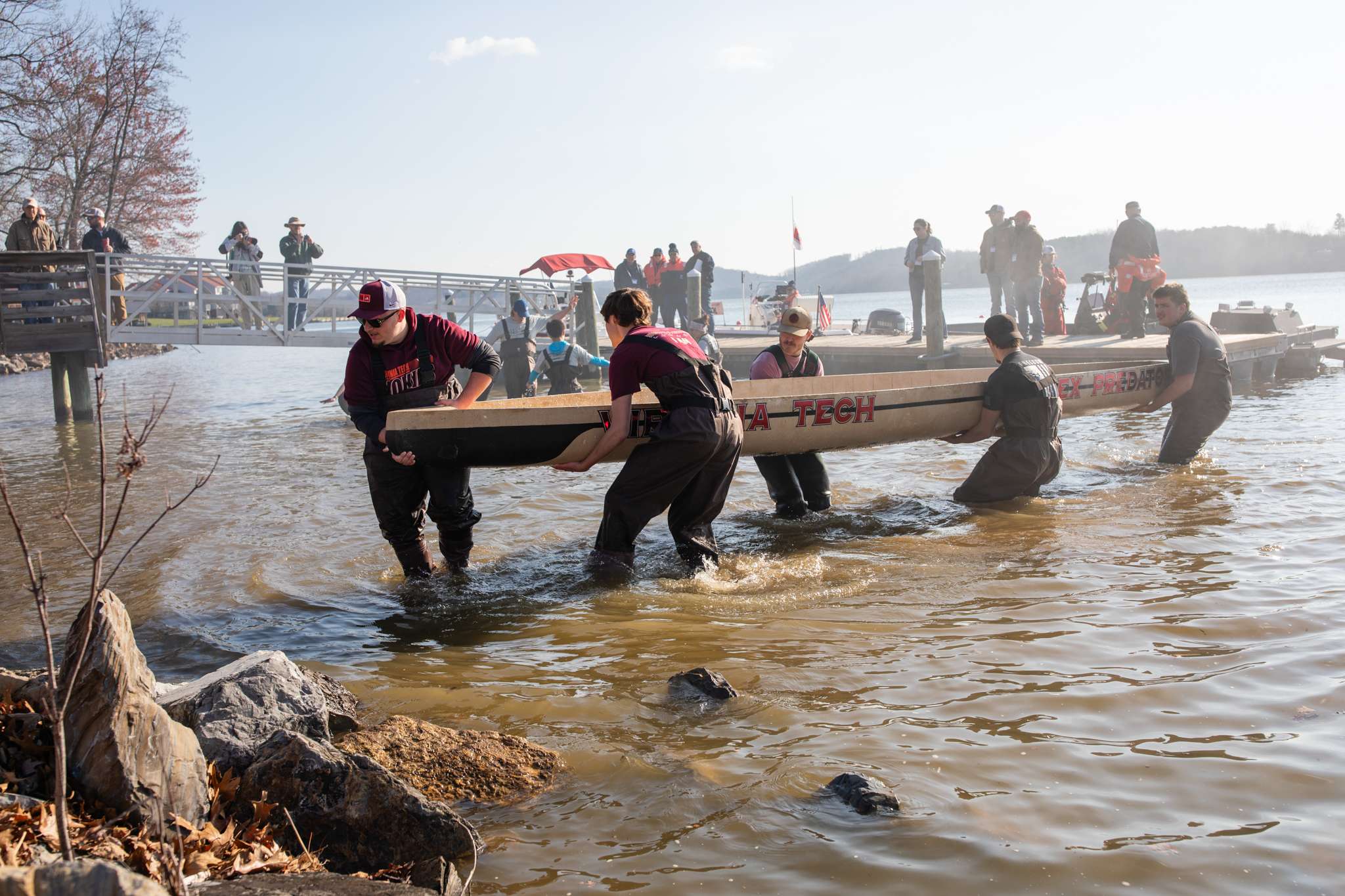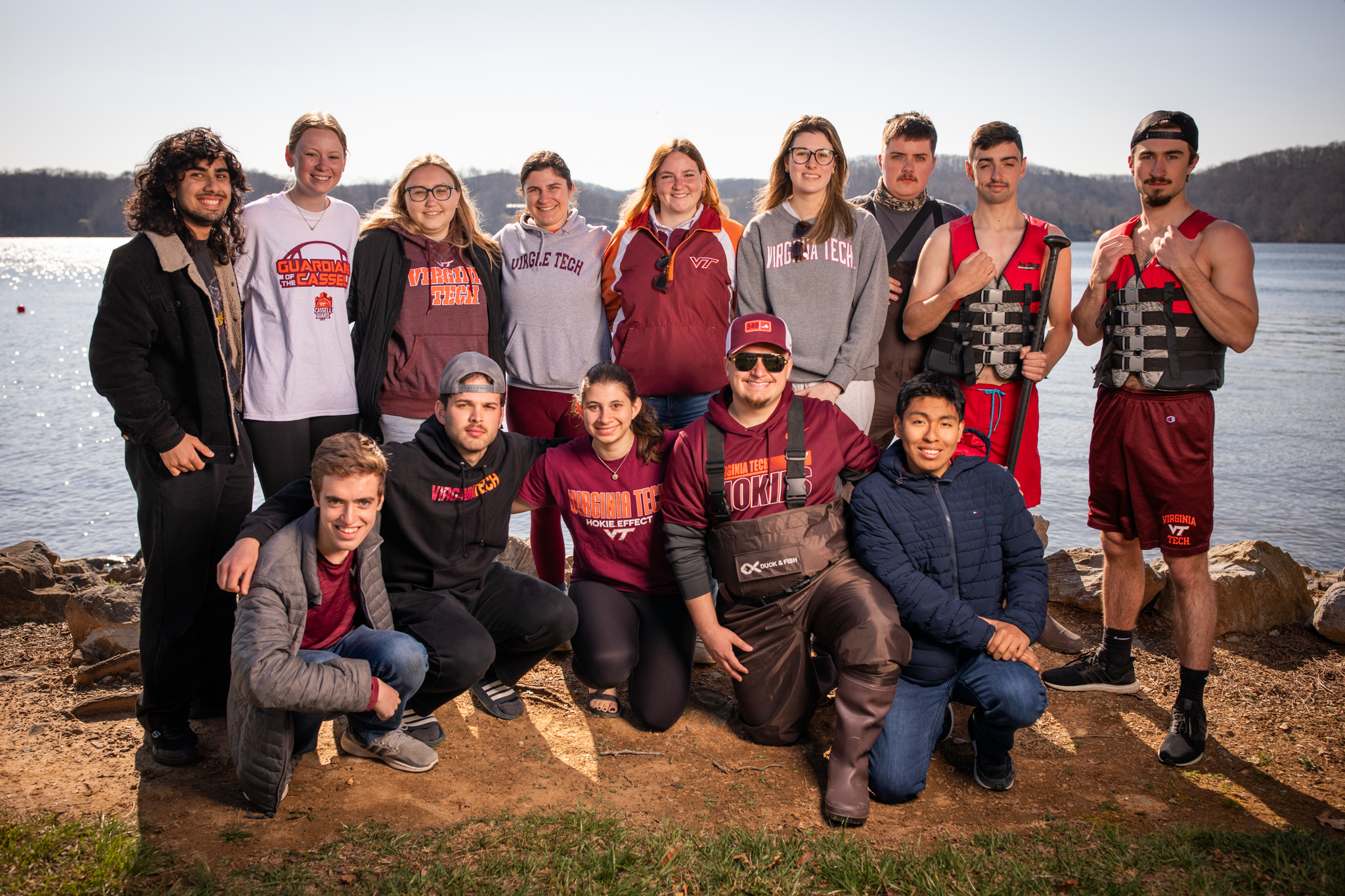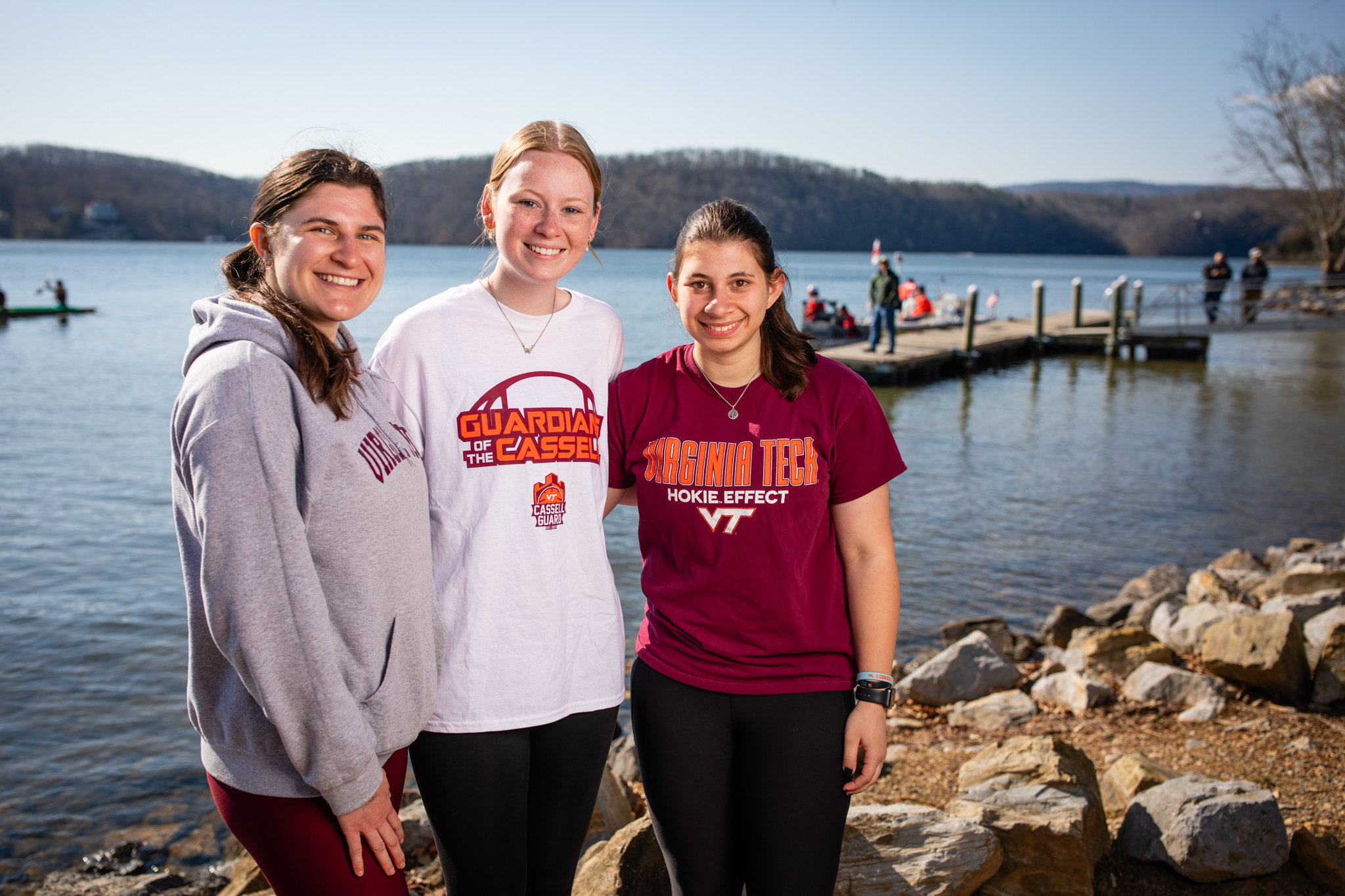Virginia Tech's Concrete Canoe team wins regional competition with the most unconventional of building materials.
Most modern canoes are crafted from molded plastic or fiberglass composites, sometimes incorporating Kevlar or graphite. These choices are favored for their light weight and durability. But what if you were challenged to make a canoe using concrete? Would it float? And if it did float, would it be fast and maneuverable?
This is the exact challenge put before the Virginia Tech Concrete Canoe Team. The team, which has existed at Virginia Tech since 2008, consists of roughly 15 students from diverse disciplines, with the majority focusing on civil engineering. Their year-long challenge, sponsored by the American Society of Civil Engineers (ASCE), entails designing, constructing, and racing a canoe crafted from concrete. Months of labor and strategic planning culminate in two days of intense competition against other local universities, where aesthetics, construction strategies, and on-the-water speed and maneuverability are put to the test in thrilling head-to-head races.
While concrete boasts magnificent strength, it's undeniably heavy. Nevertheless, it can float in the same way that massive steel container ships and barges stay afloat. The air volume inside the canoe enables buoyancy; the upward buoyant force exerted on the body immersed in a fluid, whether partially or fully submerged, is equal to the weight of the fluid that the body displaces.
Building a winning concrete canoe


While a concrete canoe can indeed float, its weight is still a significant factor. To keep the weight down, the team spent many days shaping and sanding the canoe walls to be as thin as possible, but not so thin that they become brittle.
While sanding is important, much of the weight reduction comes from the strategic concrete mix design. This year, the team chose lightweight materials that would not compromise strength. They added K37 glass bubble, which was pricy, but they thought it was worth it. K37 bubbles are an aggregate made from expanded recycled glass, which is lightweight, does not compromise mix strength, and improves sustainability.
Using K37, the team managed to decrease the canoe's initial weight from 250 pounds to a final, sleek racing weight of only 219 pounds. To put that into perspective, typical consumer canoes range from 98-pound metal canoes to 35-pound Kevlar canoes.
In addition to the materials used, hull design is also essential for success in this competition. The goal is to easily slice through the water and hold a straight course while maintaining turning maneuverability and boat stability. After ten months and countless hours, the team was ready to test their creation ahead of the ASCE Virginias Student Symposium, which was hosted at Virginia Tech in March for the first time in ten years.
Paddle practice days



In the weeks prior to the competition, the team held "paddle practice days" at Claytor Lake, using an old canoe from a previous competition year. Although they weren't allowed to test their new boat until the day of, there were plenty of learning opportunitites as a team. Throughout each practice, paddlers needed to be lifted into the canoe as the direct pressure of standing in the hull could crack it. The team also focused on refining their paddling techniques and coordinating with their partners using voice commands. While maneuvering around buoys, the team noticed difficulty in turning their older canoe, but anticipated that the new one - named "Apex Predator" - would be more responsive.
Competition day 1, aesthetics judging



The first day of the regional competition was on land, at Virginia Tech; judges scrutinized each team's canoes for aesthetics, design, build construction, dimensions, and more. The teams were tasked with preparing a cross-section sample for the judges to evaluate the layers of materials used.
The team chose the materials for the canoe carefully, taking into consideration the weight, strength, costs, and aesthetics of the materials. White Portland Cement was used as a vital component of the concrete, binding the mix through a reaction with water. They chose white to allow for better coloration of the concrete base. K37 glass bubbles and Poraver glass bubbles were used as lightweight aggregates to provide strength. Steel cables were used to apply initial prestressing force to increase the strength of the canoe. PBO and basalt mesh were alternated between the concrete layers to provide reinforcement and still allow a fairly thin profile.
Competition day 2, on the water races




The following day, on March 29, 2024, universities from across Virginia and West Virginia convened at Claytor Lake State Park in Pulaski County. They included Liberty University, Old Dominion University, West Virginia University, Fairmont State University, and the University of Virginia. The Miller High School of Albemarle also participated as the only high school thanks to a new ASCE pilot program.
The day kicked off with a safety debrief from the Coast Guard, in attendance to keep the teams safe, followed by canoe teams proving that their canoes could float back to the surface when fully submerged, also known as the "swamp test". After that, there was a thrilling morning of racing. First was the men's and women's slalom races, involving weaving through buoys, followed by the men's and women's "sprint races" where they competed for speed in a straight run. The races closed with co-ed, 4 paddler races.
Regional winners
Virginia Tech emerged victorious, securing first place overall in this regional competition, winning in both the men's and women's slalom races. The team's triumph is a testament to their hard work and innovative approach. Now, they eagerly look forward to the national competition at Brigham Young University from June 19th to 24th.
“Winning the regional competition is incredibly exciting for the Virginia Tech team. We are so proud that we were able to get our process and design down, and we made huge bounds in progress from previous years. Hopefully, our members can continue to foster our team in the coming years.”—Virginia Babcock, Paddler and Mix Design Lead




Meet the Concrete Canoe team


Maura Harbaugh
Co-Captain and Project Manager

Austin Minnick
Co-Captain and Paddling & Aesthetics Lead

Left to right: Virginia Babcock, Paddler and Mix Design Lead; Leah Goulet, Paddler and Sustainability Co-Lead; Michaela Foster, Paddler and Sustainability Co-Lead

Hugh Green
Paddler

Daniel Blitz
Paddler and Construction Co-Lead

Max Trell
Paddler

Matt Bauer
Construction Co-Lead

Brianna Wydajewski
Structural Analysis & Composite Design Lead

Evie Wensell

Thomas Walker
Hull Design Lead

Waris Popal
Finance Lead
Photos and video by Peter Means
If you want to have an impact on our students and faculty like those featured in this magazine, go here to support the College of Engineering. For more information, call (540) 231-3628.
-
Article Item
-
Article Item
-
Article Item



